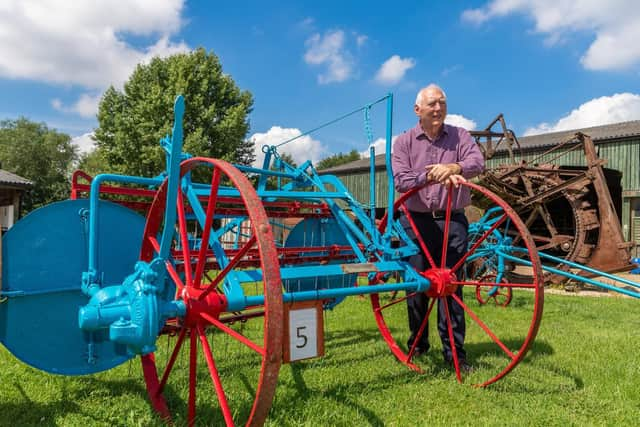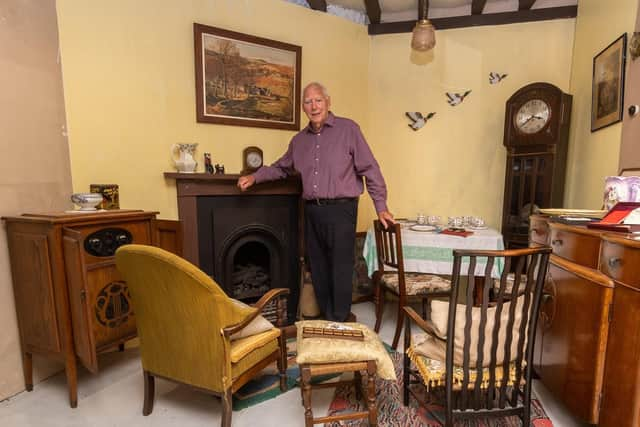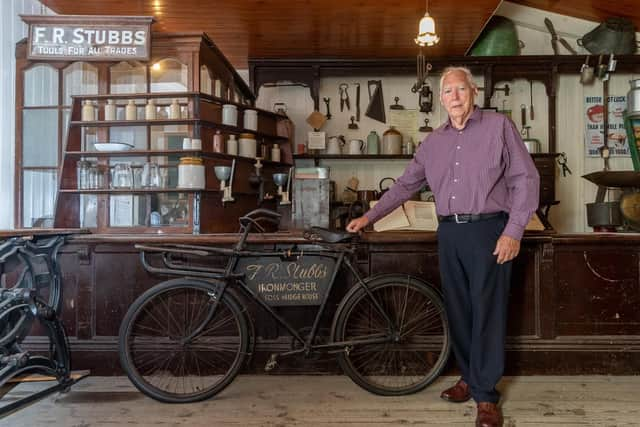Behind the scenes at the Yorkshire Museum of Farming as stalwart looks set to step down


But it is now certainly not as hidden as it was when Peter Draper became involved twenty years ago and shines bright as a diamond in an era when countryside visitor attractions in the county have come even more to the fore.
Peter celebrated his 80th birthday recently and has just relinquished his roles as site director and chairman at Murton Park, the latter of which he has held for the past eight years.
Advertisement
Hide AdAdvertisement
Hide AdIn his time the museum has made great strides with many additions to its wonderful Four Seasons building that guides visitors through ‘a year on the farm’ and the impressive Women’s Land Army exhibition that serves to reflect on how many women contributed to the war efforts in both world wars.


“The Women’s Land Army exhibition is certainly one of our most momentous additions and most well-loved areas but there’s far more, including equipment that Alf Wight (James Herriott author) donated from his veterinary practice and a huge collection of agricultural machinery, farm animals, a nature trail, café and fabulous children’s play and picnic area,” says Peter, who will maintain his role as a trustee that he became in 1999.
“Where we have benefitted immensely is from the Danelaw Centre for Living History being a part of the Murton Park business that also includes the Yorkshire Museum of Farming and our close relationship with the Derwent Valley Light Railway.
“We are extremely fortunate to have the immensely talented and extreme enthusiasm of David Thirlwall who runs Danelaw, which brings in two-thirds of our income through schools coming here to receive living education as a Viking, Roman or Stoneage/prehistoric man or woman.
Advertisement
Hide AdAdvertisement
Hide Ad“When Michael Gove was education minister he cancelled the Second World War by taking it off the school curriculum. We had the war as one of David’s team’s living history enterprises.


“It caused teachers problems as well as David, but he and his team set about building Stoneage roundhouses and Danelaw was up and running within months of the news. Danelaw’s prowess has been honoured with many awards and schools book two and three years in advance.
“Our Santa Special train rides are legendary and everyone on the site gets involved as we play host to 7,000 visitors over usually eight days. The museum itself is proactive in all areas with much more midweek activity in addition to school holiday and weekend visits.
“We host many events during the year. The site has become and continues to become a place to be as it offers so much scope for anyone planning a new event or wanting a new venue.”
Advertisement
Hide AdAdvertisement
Hide AdPeter is a proud Westmerian, which comes from the old county name of Westmorland that was also known as Westmereland. It was farm machinery that provided his pedigree and led to his role at Murton Park where his career knowledge has proved valuable.


“I was born in Kendal in 1939 and spent all my free time as a child on farms or playing sport. My mother was from a farming family just outside of Kendal.
“I went into agricultural engineering as an apprentice mechanic with local company Crofts of Kendal at 15 who had Ford and New Holland franchises. I think my boss thought I’d never make a good enough mechanic so he made me a salesman and my first area was Penrith to the top of Brough Fell, down to Sedbergh and Kendal.
“In those days we were selling towed hay machinery as the mounted machinery was only just coming in from the continent, but balers were the boom equipment of the time especially in Cumbria as it is largely all sheep and dairy cows and a lot of grass. I’d been made baler engineer and as soon as I put my overalls on I’d been sent to Bamfords factory in Uttoxeter. It was all conventional small bales in the 50s and early 60s, only Allis Chalmers had a round baler.”
Advertisement
Hide AdAdvertisement
Hide AdPeter’s career took an upswing through the revolution that occurred in the dairy sector with new milking parlours, the buildings they were housed in and latterly bulk milk tanks.
“At one time all dairy farms were run by fathers and sons with 40 cows, but they could no longer make it pay that way and had to increase their herds. When that happened they needed some form of improved milking arrangement. I’d always enjoyed planning and we ended up providing packages through Crofts to cater for their building requirements, the parlour from Fullwood & Bland in Shropshire and all logistics. We started to develop a long-term relationship with a building company Crendon Concrete based at Thame in Oxfordshire and I was approached to work for them.”
Moves to Carlisle in 1969 as a result of a new position and then to Ayr as he took on a larger area covering more of Scotland, before moving to Wetherby in 1973 when he became their North of England sales manager, were followed by a return to farm machinery sales managerships at Croft & Blackburn, who had sites in Ripon and Northallerton and to WCF (West Cumberland Farmers) in 1980, then Europe’s largest farmer-owned co-operative as machinery director.
Peter and his family, including wife Janice and sons Jonathan and Andrew, moved back to Carlisle before venturing back to Yorkshire when he joined Seward where he took over the sales and purchasing management in 1985.
Advertisement
Hide AdAdvertisement
Hide Ad“I retired from Seward in 1998. Paul Seward was here at Murton Park working alongside James Stephenson and Oliver Worsley. They had nursed the museum through a rough time. I came along because Paul rang me one night to tell me he’d been diagnosed with terminal cancer. Sadly he left us not too long afterwards. I’ve been here ever since and I’m certainly not leaving. This is a fabulous place.”